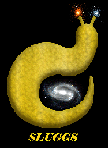
Surveys


SAGES currently has as its main focus two wide-field chemo-dynamical surveys of early-type galaxies, "SLUGGS" and "SMEAGOL", which capitalize on the unmatched observing power of the
Subaru/Suprime-Cam imager and the
Keck/DEIMOS spectrograph,
combined with models to interpret the observations in a cosmological context.
In particular, spectroscopy of the near-infrared calcium triplet furnishes kinematic and metallicity information of stars and globular clusters in two dimensions around the galaxies. With this approach, we aim to measure halo properties such as mass, angular momentum, metallicity gradients, orbit structure and substructures. These fundamental characteristics will provide important clues to the assembly histories of galaxies.
In particular, spectroscopy of the near-infrared calcium triplet furnishes kinematic and metallicity information of stars and globular clusters in two dimensions around the galaxies. With this approach, we aim to measure halo properties such as mass, angular momentum, metallicity gradients, orbit structure and substructures. These fundamental characteristics will provide important clues to the assembly histories of galaxies.
 | The SAGES Legacy Unifying Globulars and Galaxies Survey (PI: Jean Brodie, NSF AST-0808099) focuses on the globular clusters, extending to ~10 effective radii. Initial results and techniques can be found here and here. |
| The Spectroscopic Mapping of Early-type Galaxies to their Outer Limits (PI: Aaron Romanowsky, NSF AST-0909237) focuses on the integrated field starlight, extending to ~3 effective radii. This work is made possible by a ground-breaking technique for two-dimensional spectroscopy described here and here. |  |
Both surveys target the same sample of galaxies, which follows in the spirit of the original SAURON and PN.Spectrograph surveys by including a "representative" selection of 25 nearby systems. More survey details are forthcoming.

Home | People | Publications | Research | Spectral Database | Links | Members Only | Downloads | News | Contact us